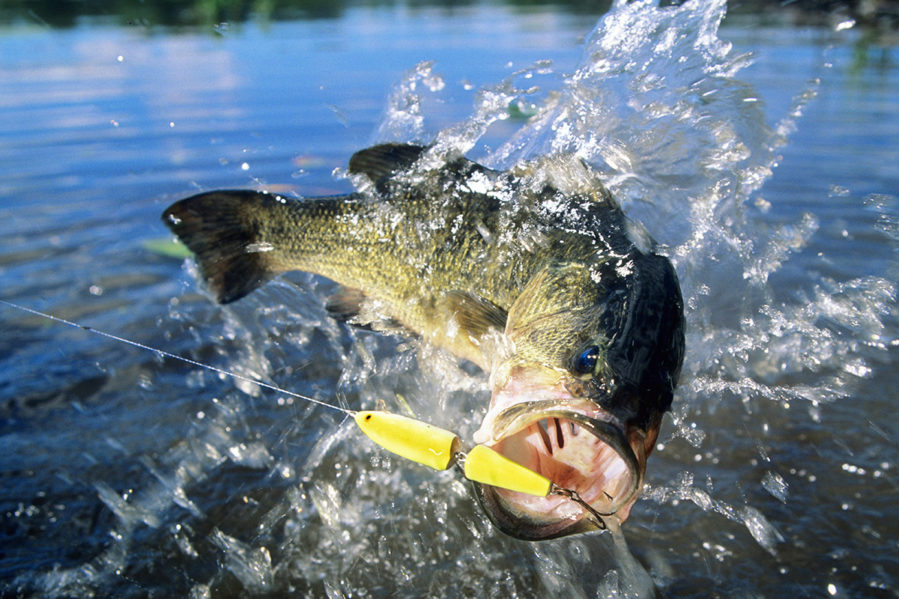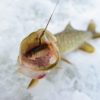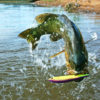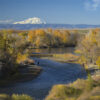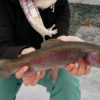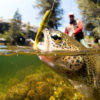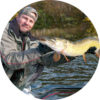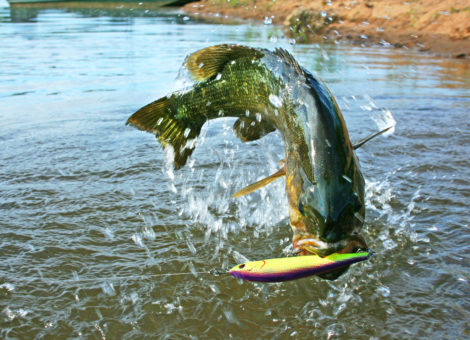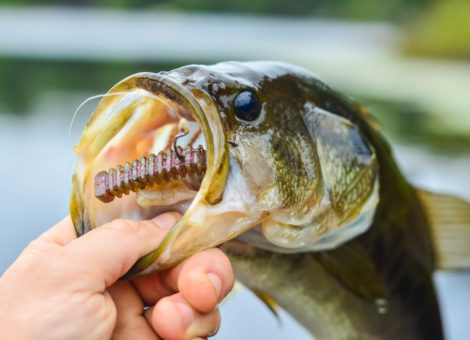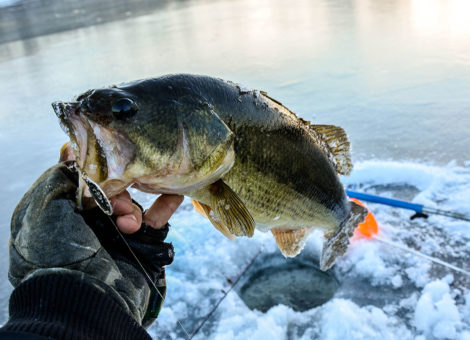Bass fishing can be challenging, especially if you’re a new angler. To catch bass like an expert, you need to learn the basics before integrating professional tips and strategies.This guide will teach you everything you need to know to catch bass skillfully. We’ll cover all essentials, from the best bait to quality fishing equipment.
Types of Bass
Bass is one of the most common freshwater and marine fish species worldwide. They are most commonly identified by their mouth-to-eye distance. Anglers also check the size and location of stripes or blotches, and rays and spines on fins. While several species fit under the ‘bass’ category, we’ll focus on the seven most popular game varieties. It’s worth noting that catching bass is somewhat different from other fish. If you can recognize popular bass types and their feeding habits, you’ll find greater success on your next fishing trip.
Largemouth Bass
This kind of bass has spiky dorsal fins. They’re easiest to identify based on the characteristic deep notch in-between their fins. They also have a protruding upper jaw that extends past its eye. While young ones feed on insects, small fish, and crustaceans, adult largemouths prefer frogs and crayfish.
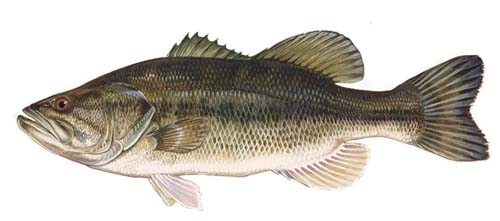
Smallmouth Bass
Like the largemouth, it too has spiky dorsal fins with a notch. But the gap is not quite as deep. Its upper jaw is smaller as well. Another distinguishing feature is the three dark lines found on their cheek. Young smallmouths prefer undeveloped aquatic insects and plankton. Adult smallmouths prey on fish and crayfish.
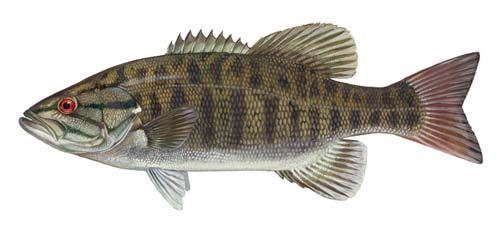
Spotted Bass
The spotted bass is also known as the Kentucky bass. They can be hard to identify because they resemble the largemouth. When compared, you’ll notice that the Kentucky bass has smaller spots, a smaller jaw, and lighter coloration. Its diet includes frogs, crayfish, and fish.
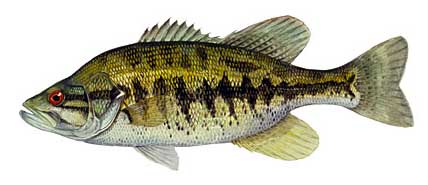
Alabama Bass
The Alabama bass was considered a subspecies of spotted bass until 2008. Now a distinct species, it is identified by the number of pored scales. The spotted bass has 70 or fewer, while the Alabama bass has 71 or more. You’ll also note that the species has aggressive feeding habits.
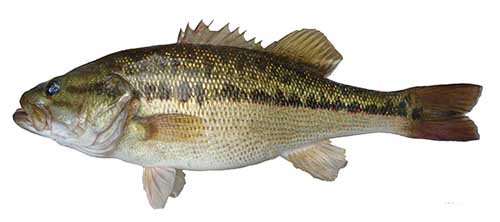
Redeye Bass
This fish is identifiable by the tiny dark spots beneath the lateral line. It also has a second dorsal with a red-looking appearance. Their upper jaw doesn’t protrude, either. They consume terrestrial insects along with crayfish, small fishes, and salamanders.
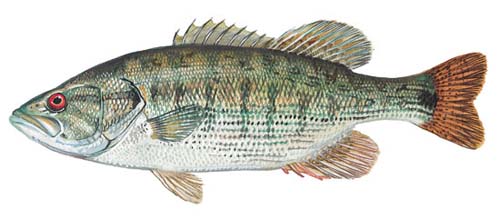
Guadalupe Bass
They are easier to spot based on their lateral stripes. Most will have between 10 and 12 stripes with a dark appearance. You’ll find them in olive or bronze color and a non-protruding upper jaw. Like other species, this type feeds on insect larvae, crayfish, and fish. But, they prefer insects, unlike other bass types.
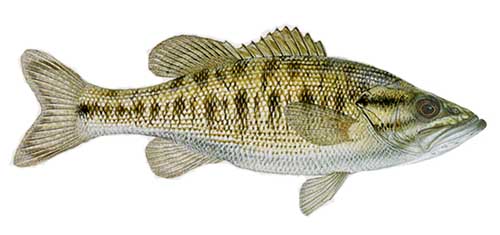
Shoal Bass
These fish are like redeye bass, except they lack the reddish margin on their fins. They prefer aquatic insects over fish and crayfish.
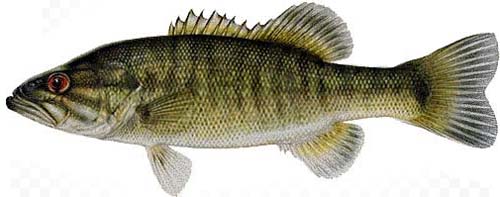
Bass Fishing Essential Gear and Supplies
As a new angler, the range of fishing gear and supplies at a tackle shop will confuse you. You’ll also find it difficult to sieve through the available equipment to find the items you need. Here’s a short how-to guide.
Rod and Reel
If you’re new to bass fishing, there’s a high chance you’ve never used a baitcaster. Since these are hard to master, you’re better off with a reel combo and spinning rod.
If you’re a veteran angler, try Abu Garcia or Lew’s baitcasting reel and rod combo. Yes, you’ll need plenty of practice and patience with this baitcaster. But, you’re guaranteed improvement in efficiency and distance.
Bass Fishing Rigs and Terminal Tackle
The assembly of fishing rigs features a blend of these components:
- Main Line
- Leader Line
- Hook
- Lure or Bait
- Weight/Sinker
- Swivel and Bead
Fishing Line
When it comes to fishing lines, there’s no one-size-fits-all for various fishing techniques. But, if it’s your first time with a spinning combo, you should start with a 10lb Monofilament. They are affordable and easy to use.
If you want to reel a baitcaster, consider a 20lb braided line. Although you can fix braids into the bait, you might want to add a Fluorocarbon leader and tie it to a swivel. If you’re a professional angler, you might prefer a full Fluorocarbon main line. While this option is optimal, it demands super knot-tying skills. It is also costly.
Sinkers and Weights
These are a must-have in every angler’s fishing bag. Sinkers work with live bait, while weights are associated with artificial lures. Nonetheless, they perform the same role, i.e., lowering your bait.
If you’re using Texas or Carolina rigs, you need ¼ -1/8 oz weights. Lighter weights work better with bass as they prefer a slow fall rate. This tempts them to rush forward and strike the bait as it descends. Some circumstances might need heavier weights since fish prefer different fall rates. Factors can vary and include water temperature changes overnight or conditioning. You’ll need to experiment with the fall rates by modifying the sinker weight.
Hooks
Anglers have a dizzying variety of hooks at their disposal. Knowing what kind of hook to use can turn a disappointing fishing trip into a successful one.
- Straight Shank Hook
This is your typical fishing hook with a straight shank and a u-shaped end. It is suitable for pitching, flipping, and fishing in heavy cover. - Offset Round Head Hook
This style comprises an extra Z bend in the eye’s rear. It helps maintain plastics and bait in place. The design also allows for an improved arrangement with streamlined plastics. - Offset Wide Gap Hook
While similar to the offset round bend hook design, it is distinguishable by its bigger gap. This hook enables anglers to reel heavier bait choices. - Drop Shot Hook or Octopus Hook
These hooks are built for a specific technique. Here, anglers let the weight fall to the bottom and rest there for about 15 seconds. Then the weight is lifted off the bottom and allowed to fall again. You’ll need to repeat the process as you continue reeling in. - Wacky Rig Hook
The hook resembles the drop shot style, except it has a broader gap. The gap accommodates stick baits and plastic worms.
Fishing Swivels
A swivel has a significant role in fishing rigs. They function as the link between the leader and the main line. They remove the major line twist while permitting those beneath the swivel to spin and turn. Their manufacture occurs in crane, barrel, snap, and ball bearing configurations. Out of these swivels, the ball bearing is the best should you decide to use a swivel.
Beads
Beads serve a definitive purpose in fishing. They come in several sizes and colors. They can also be of different materials like glass, plastic, or brass. Some beads offer knot protection, such as in Carolina and Texas rigs. Angles use them as noisemakers to attract fish as well. They can help secure a tackle and act as weights as well.
Lures
Bass can be very aggressive. Not only do they actively chase their prey, they can put up quite the fight when pulled out of the water. It’s thus important to arm yourself with hard baits, including swimbaits and crankbaits. If you’re a beginner, consider buying two crankbaits and one of each of the rest.
You must have one lipless sinking crankbait too. This makes it possible to target deep and shallow waters. Crankbaits also help off-the-dock fishing. While tackle shops will store many crankbait varieties, you can cover most opportunities with a Square and Lipless Bill.
Soft Baits
Having plastic bait is significant for various reasons. It’s essential to have at least one pack of each kind: worms, tube baits, and Shad jerk baits. When fishing in shallow water with vegetation, use natural colors such as brown and green. If fishing in deeper water, use unnatural colors such as blue and bubblegum. These work well in stained water too.
Live Bait
Although bass fishing with live bait isn’t as popular today, it’s still efficient. It’s worth noting that different kinds of bass need different live lures. Common live baits that will attract most bass include:
- Crawfish
- Worms
- Leeches
- Frogs
- Salamanders
- Creek Chubs
- Minnows
The main issue you’ll face when using live bait is that bass will often swallow the hook and bait. Pay attention when using live bait and set the hook at the initial sign of a gnaw. Otherwise, you’ll lose the hook.
Bass Fishing Tips and Techniques
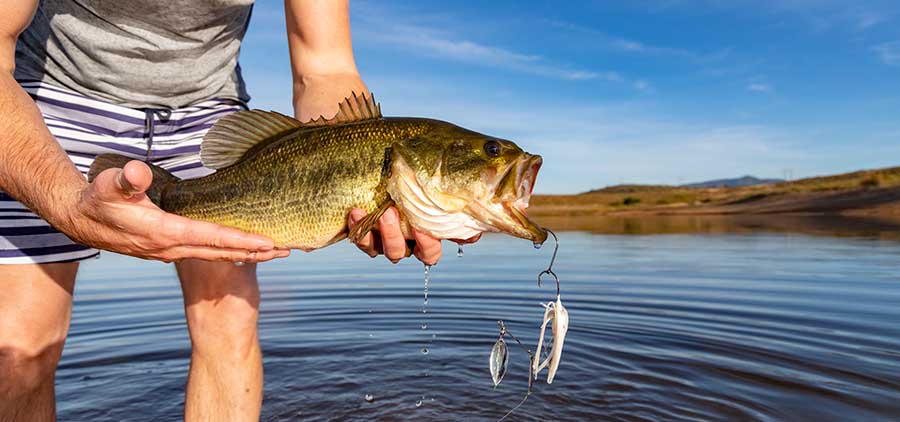
If you want to try professional techniques, then these are the most common ones used by anglers.
- Work the bottom
Bass frequent shallow waters outside the spawning season. Consider fishing off the bottom next to cover if you want greater success. The technique is simple enough. It involves bouncing skirt jigs or bait rigs to the bottom and dragging the bait to release a cloud of dust. Then you can alternate between pulling, elevating, and dropping the bait while pausing. - Match the Hatch
Most bass varieties feed on fish or crayfish. Some prefer insects. Some will attack baby ducks, rats, and even salamanders. Identify which bass type you’re after and match your lure to their food preference.If they prefer shad, use a silver-colored swimbait or crankbait. Use a dropshot rig featuring a small plastic if tiny minnows are the predominant forage.
- Fish the Edges
You want to cast along the edge of structural transitions rather than across. Weedlines, for instance. You won’t find bass in the weeds, but they prefer the side where there’s shade. - Roll the Cover
This technique involves targeting underwater covers such as logs and boulders. Anglers use a spinnerbait setup for this technique. Ensure you hit the cover and allow the bait to roll over, especially to the shady section. - Pitch your Baits
This technique involves pitching bait to target protruding cover and confined areas. You’ll extend your pole’s length and grab your bait with the other hand. Then, you’ll aim at the isolated target and release the lure while allowing the rod to sling your bait gently. - Flip your Lure
This technique resembles pitching, except that it needs trebled and bulky baits. Anglers who prefer jigs and cranks can reach their targets by flipping. Flipping requires several steps, beginning with releasing 10-15 feet of the line between the reel and the initial rod guide. Hold the line with your free hand before the initial rod guide. Then swing the lure towards the target. While doing so, release the nipped line at the end of the swing. In turn, this will flip the bait beneath the cover. - Understanding Weather Impacts
Weather conditions can have a major influence on bass behavior. For instance, they tend to be active and eager to expose themselves to eat on cloudy days. In this case, you should use ChatterBaits, spinnerbaits, and topwater plugs. These attract active fish on overcast days. - Watch the Water Temperature
Water has a huge impact on bass feeding patterns and activity levels. Use slow-moving lures in cooler water and more aggressive bait in warmer water. When topwater fishing, use techniques such as walking baits and hollow-bodied frogs. You can also use pencil poppers to catch bass throughout summer.
When the weather is bright, bass enjoys hanging tight to cover and waiting for meals to reach them. To catch them on sunny days, use bouncing bait such as a jig. Ensure you turn and pitch the lure to the cover base, and you’ll notice a bass hammering it.
Where to Find Bass
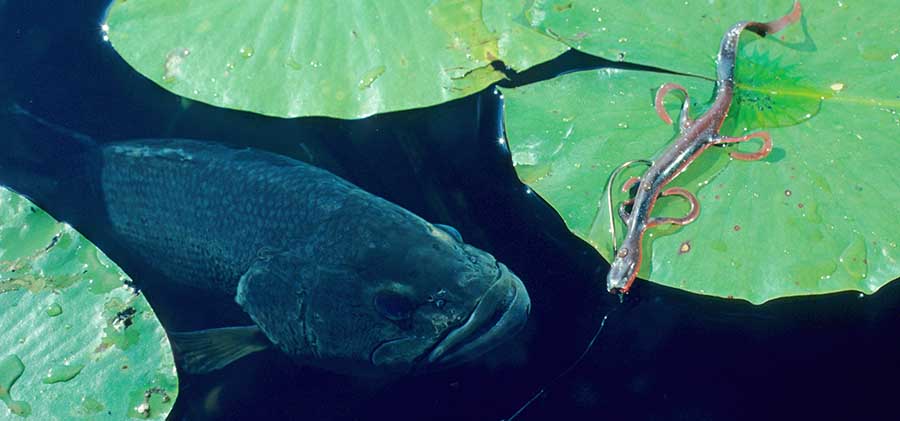
Most of your success will depend on location when bass fishing. It won’t matter if you use the most expensive equipment if you pick the wrong spot.
The hardest part of bass fishing is locating the fish. This is because bass tend to shift between lakes, ponds, and reservoirs. Factors such as water temperatures, time of year, weather, and water levels will determine their location. Availability of food is another determining factor.
Prime locations for bass include areas with vegetation and covers. If you’re keen on largemouth bass, search areas with plenty of cover. Largemouth bass feel secure when they can hide and ambush prey. You’re likely to find such cover in shallow water.


